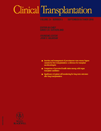Discrepancies between clinical and autopsy diagnoses in lung transplant recipients
Abstract
Akindipe OA, Fernandez-Bussy S, Staples ED, Baz MA. Discrepancies between clinical and autopsy diagnoses in lung transplant recipients.Clin Transplant 2009 DOI: 10.1111/j.1399-0012.2009.01144.x.© 2009 John Wiley & Sons A/S.
Abstract: We sought to investigate the role of autopsy diagnoses in lung transplantation by comparing the clinically derived cause of death with autopsy deduced cause of death in a cohort of lung transplant recipients. We retrospectively reviewed all consecutive autopsy findings on lung transplant recipients transplanted between March 1994 and March 2007. We reviewed medical records and our lung transplant database to determine the clinical diagnosis of cause of death based on the clinical assessment and discharge summary at the time of death. Our study showed that 21% of the autopsies performed on lung transplant recipients at our institution revealed findings unsuspected at the time of death. Myocardial infarction, pulmonary embolism, high grade acute cellular rejection and infections were the most frequently missed diagnoses. The autopsy remains a useful tool in confirming diagnostic accuracy in lung transplant recipients.




